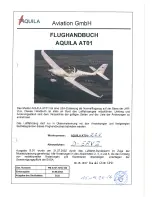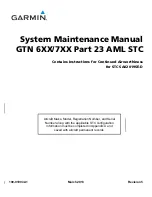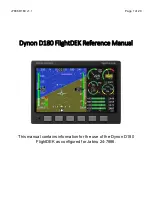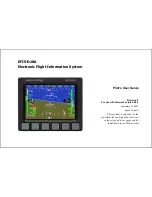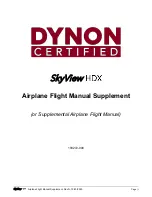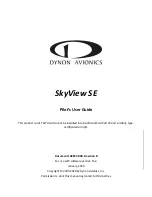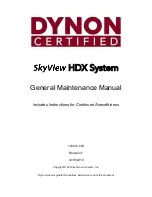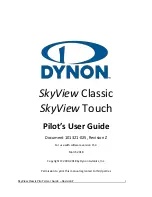
v
190-00607-02 Rev C
Introduction
About this Manual
This manual may be used as a summary, a refer-
ence, and a learning tool. Information is provided
about all of the functions available to the GMX 200.
Your specific installation may not include all of these
functions.
Take a few moments to familiarize yourself with
the various sections in this manual. The Getting
Started section gives an introduction to the controls,
basic operation, and organization of the functions in
your GMX 200. Be sure to read the Getting Started
section to learn the rules for using the GMX 200. The
Detailed Operation section (starting on page 15) is the
reference for each of the functions in the GMX 200.
Refer to the Detailed Operation section when you want
to get into the details on every function and option
along with step-by-step instructions.
Not every function is available in every installation.
Limitations
The Traffic function is not a collision avoid-
ance system. It is an aid to visual acquisition and
does not relieve the flight crew of their respon-
sibility to “see and avoid.” There are no evasive
aircraft maneuvers authorized, recommended,
or provided for as a result of displayed traffic
targets. Refer to the traffic sensor documentation
for additional information.
All pilots/operators are reminded that the airborne
equipment that displays other ADS-B equipped aircraft
and transponder equipped aircraft via TIS-B is for pilot
situational awareness and is not approved as a colli-
sion avoidance tool. Any deviation from an air traffic
control clearance based on cockpit information must
be approved by the controlling ATC facility prior to
Limitations
commencing the maneuver. Uncoordinated devia-
tions may place an aircraft in close proximity to other
aircraft under ATC control not seen on the airborne
equipment and may possibly result in the issuance of a
pilot deviation.
The Terrain function shows you the general terrain
elevations relative to your altitude and are advisory
in nature. Individual obstructions may be shown
if available in the database.
Terrain is displayed
from database information and may therefore
contain errors. The Terrain function does not
relieve the flight crew of their responsibility to
“see and avoid.” Do not use this information for
navigation.
The moving map, weather information, and
other displayed information are meant to be aids to
situational awareness. The pilot should rely on the
appropriate primary means of navigation and consult
official and approved data sources prior to and during
each flight.
Refer to your airplane flight manual supplement
for more information.























